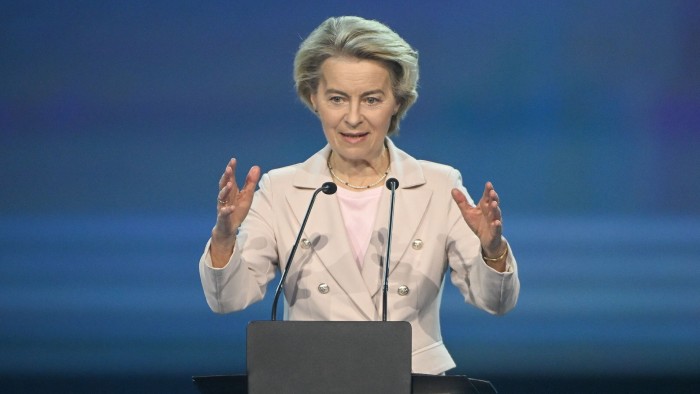Unlock the Editor’s Digest for free
Roula Khalaf, Editor of the FT, selects her favourite stories in this weekly newsletter.
Brussels is preparing a radical overhaul of the EU’s next trillion euro common budget, replacing dozens of programmes with merged funds that would hand more spending power to capitals.
The plan, outlined in a paper seen by the Financial Times, calls for a more “ambitious” budget in “size and design” to meet increased spending demands on defence and hefty debt repayments.
While the paper stops short of proposing a total for the multiyear budget, which starts in 2028, the European Commission makes the case for the biggest ever revamp of how the funds are distributed, saying “the status quo is not an option”.
It notes that the need to repay costs for Covid-era bonds would alone amount to €30bn a year, or 20 per cent of the bloc’s annual spending — an unprecedented financial burden that will force the EU to rethink overall contributions.
Any bid to ramp up the overall budget will probably meet stiff resistance from the biggest net-contributors to the budget such as Germany and the Netherlands.
Rather than frame the negotiation around long-standing categories, the commission indicated it wanted to revolutionise the budget’s structure, lumping together over 50 “rigid” spending programmes into three main funds that provide more “flexibility” to cope with unexpected challenges.
The EU budget is traditionally funded by national contributions amounting to around 1 per cent of the EU’s gross national income. Roughly about one-third is allocated to farming subsidies, another third to the least developed regions — through so-called “cohesion” policy — with the rest covering everything else from foreign aid to EU staff’s salaries.
Under the simplified budget, the commission would agree a single “plan for each country with key reforms and investments”, including regional funds and farming subsidies. This in effect would give national governments more leeway in deciding projects, including some that have traditionally been agreed at local authority level with Brussels.
A second “European competitiveness fund” would boost investment in key sectors and common projects, while a “revamped” fund for foreign policy would be “more aligned with our strategic interests.”
These two funds could enable the EU to dedicate a much bigger share of the budget to cross-border defence projects, which has not been a priority in past EU budgets.
The opening pitch from the commission comes ahead of a formal legislative proposal for the budget — formally known as the Multiannual Financial Framework — due this summer. All 27 countries need to agree on it, a process that took over two years of negotiations for the last MFF.
The commission argues that the existing distribution mechanisms are too bureaucratic and slow in approving projects. While the EU is currently half way through its seven year budget cycle, just 6.4 per cent of the regional funds have been spent to date.
Negotiating spending envelopes with member states governments would simplify the process, and allow the commission to monitor how the projects met overall reform goals. But this could leave local and regional authorities with less say over the use of the funds. The paper said any policy would need to be “designed in partnership with national, regional and local authorities”.
A commission spokesperson declined to comment on the proposals, which are due to be unveiled on Wednesday.
Siegfried Mureșan, a conservative member of the European parliament in charge of the budget negotiations, said: “We want a budget that’s better aligned with union’s new priorities, which are competitiveness and EU defence.”
Additional reporting by Andy Bounds and Henry Foy
Read the full article here




